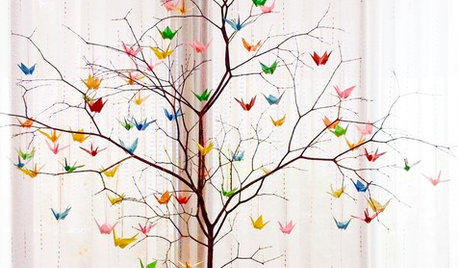Tillandsia cyanea bracket turns green (?)
Sunflowerpoet
19 years ago
Related Stories

MOST POPULARHouzzers Deck the Halls
From traditional to quirky to innovative, readers show their Christmas tree style
Full StoryI bought a Tillandsia cyanea a couple of months ago. The flower bracket was pink and it had a few blue flowers.
Now the flower bracket is turning green. Why? Is it bacause of lack of sufficient light (I think it has decent light) or end of blooms? Some plantlets have emerged from the base. Thanks.

fresh_tendril
SunflowerpoetOriginal Author
Related Professionals
Fort Lee Landscape Architects & Landscape Designers · Aurora Landscape Contractors · Milford Landscape Contractors · Duarte Landscape Contractors · Live Oak Landscape Contractors · Mission Landscape Contractors · Parker Landscape Contractors · Rosemount Landscape Contractors · Berkeley Fence Contractors · Chicago Fence Contractors · King City Fence Contractors · Richmond West Fence Contractors · Dale City Siding & Exteriors · Ft Washington Siding & Exteriors · North Hollywood Siding & Exteriorssplinter1804